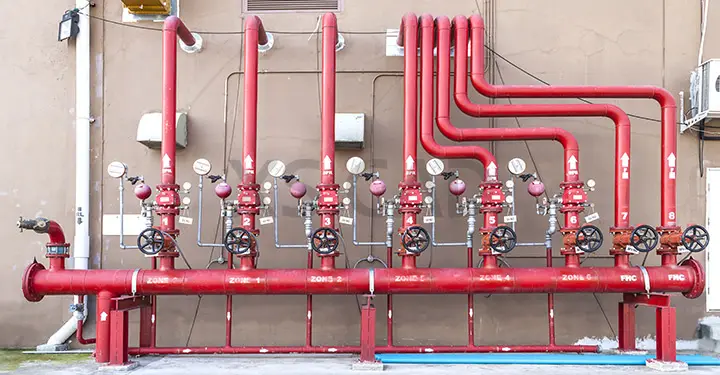Our Articles

Considering External Services for Building Design
A long time ago, somewhere in the Third World, a large, luxury-fitted, modern apartment complex was built in record time and apartment units were sold, only for residents to discover that their beautiful chrome-plated bathroom fixtures and kitchen taps were stone dry; the entire complex was devoid of any water connections. Granted, this is not a common occurrence, but it does illustrate the importance and necessity of reliable and well-designed external services in building design, which includes more than water connections. In fact, in most cases, it is a starting point in the construction process. It is imperative to source high-quality building engineering design services from reputed building services design consultants to ensure that external services are efficient and dependable.
What do we mean by external services in building design?
External services is a term used to describe material and routes of all building services outside the main building footprint and within the site perimeter, including water supply, wastewater piping, surface water drains, cables and pipes for utility supplies (internet connection, gas, electricity, telecommunications, etc.). It involves bringing all these services from the main lines, outside the compound and in a public area, to the building under construction.
Typically, external services can include:
When speaking of electricity and plumbing, external services include the lines taken from the site perimeter to the building, the cabling, landscape lighting, etc. Electricity is taken to a central location on the site or in the building and then branches out. Plumbing involves water supply and wastewater connected from the main water/sewage lines outside to inside the compound and inside the structure. Mechanical services include chillers (either air or water-based), which are installed in the basement, and chiller pipes run vertically to the floors above. However, in large projects, sometimes a mechanical plant room is a separate building, which falls into the realm of external services. Routes and layouts for fire design devices outside a building are also part of external services.
There are other facets to external services which are not so obvious, such as:
Each of these facets must be carefully considered by building services design consultants. Other key considerations include:
So, who are the main protagonists in external services design and what do they do?
Part of the range of external services provided is external drainage. These drainage systems will need to be connected to the main sewage lines outside the site.
There are generally 3 types of external drainage systems to be considered. They are:
Foul drainage: Above- ground sanitary pipework joins underground pipework or foul drainage or sewers, carrying wastewater from bathrooms and kitchens.
Surface water drainage: Building wastewater from rain, condensation and melted snow/ice are guided through roof guttering and rainwater pipes, which connect to underground pipework or surface water drains and surface water sewers.
Sustainable urban drainage systems: This is an alternative system to traditional drainage systems, such as filter strips and drains, swales, rainwater harvesting tanks, permeable surfaces, basins, ponds, underground storage, wetlands, etc.
Software
External services design is an extensive exercise and requires both skills and the relevant software tools. With the help of BIM (Building Information Modelling) technology and the BIM-enabled software, precise designs can be generated. Software that is typically used for external services design can be as follows:
So, when in need of reliable building engineering design services, experienced building services design consultants will deliver high-quality BIM MEP services and building services coordination within a reasonable budget. These design services providers will have the expertise to provide precise building design documentation, drafting and modelling for external services.
XS CAD has valuable experience providing MEP Design services, BIM MEP services, engineering design services, building services coordination and M&E design engineering support for global firms. Our range of mechanical engineering design services for MEP design consultants include MEP drafting, MEP BIM modelling and MEP coordination.

